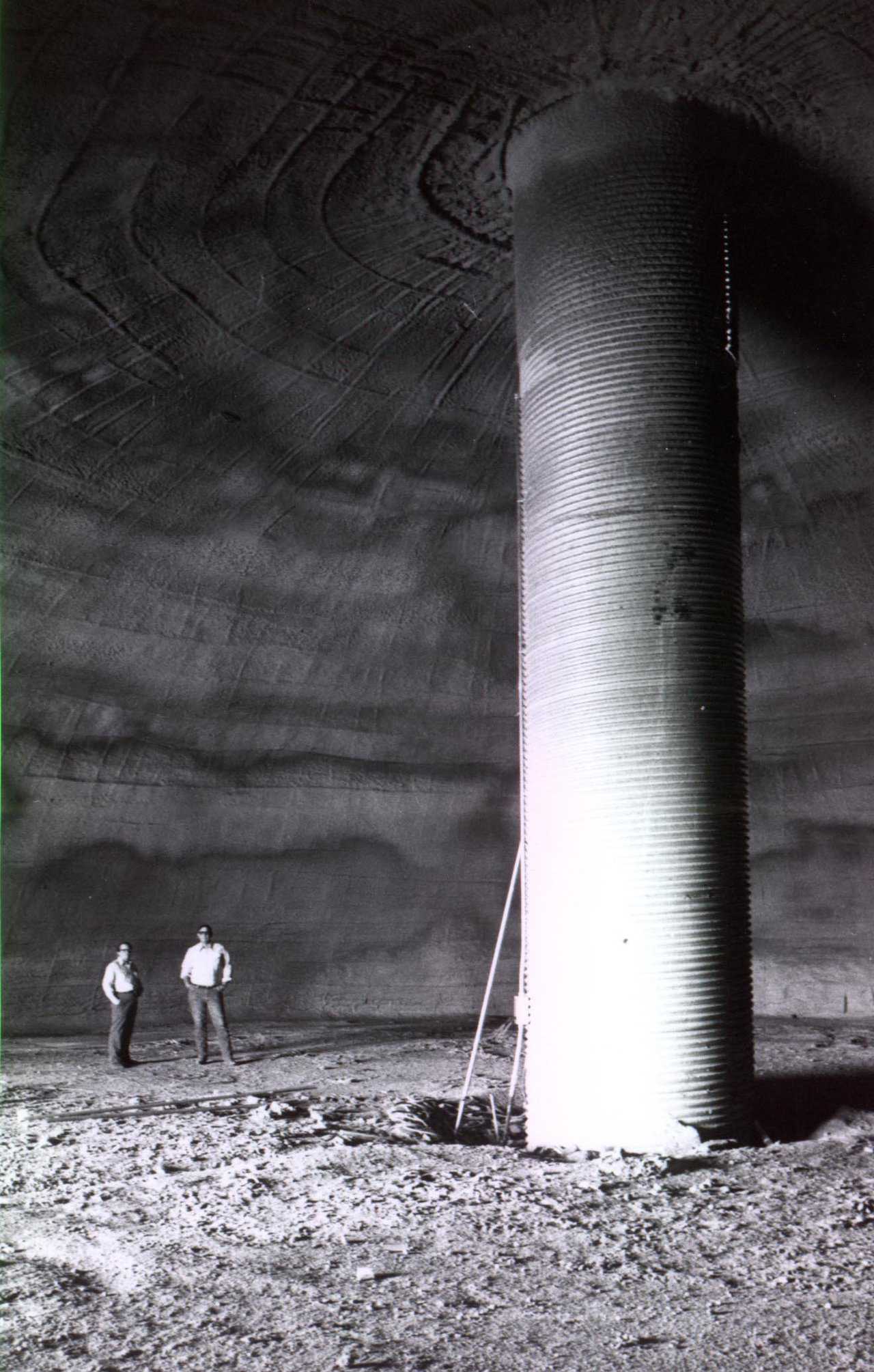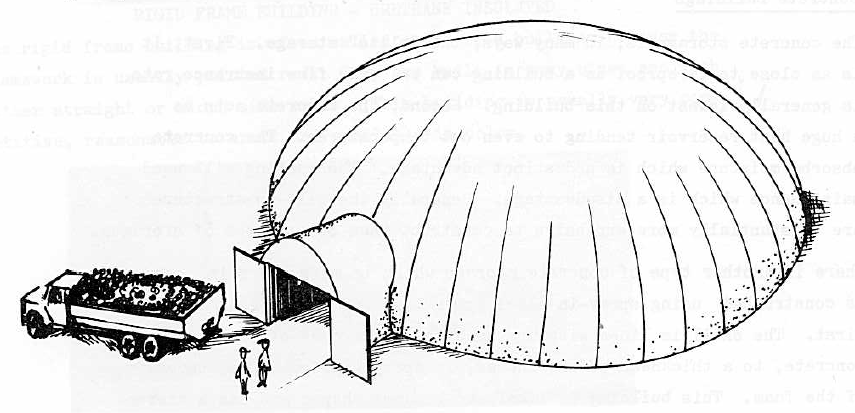Note: This article, updated in May 2013, is an introduction and addition to a booklet I wrote soon after we constructed our very first Monolithic Dome, a 105′ × 35′ potato storage. Although written in the early 1980s, the information in Protect Your Potatoes [PDF] is still valid.
Alive! Alive-Oh!
While they’re not wheeled down a Dublin street by Molly Malone singing “Alive! Alive Oh!” staying alive is as important for potatoes as it was for the cockles and mussels Molly did wheel.
In fact, keeping those spuds alive while they sleep in storage is the one vital goal of a potato-storage facility. That’s because a potato is a living organism, that can stay asleep and alive for a long time if it’s properly stored. But if it’s not, it will die and rot very quickly.
Potatoes spend most of their life sleeping. Their growers usually harvest them and tuck them away in a nice, neat bed – a potato-storage structure such as a Monolithic Dome – for a winter and sometimes considerably longer. I have seen potatoes that were just fine after spending three years in laboratory storage.
Important factors
Various factors working together determine the success or failure of a potato storage. The storage structure’s interior temperature must be constant and proper. Generally, that temperature is 43 degrees Fahrenheit, but it might be slightly lower depending on the crops’ end use: seed potatoes, table potatoes or process potatoes.
Humidity is also important; it should be kept at 98%.
Just a slight rise in temperature can waken potatoes by making them think that winter is over and it’s spring – time to get up and sprout. A potato is its own seed piece. From what we call a potato’s eyes, wakened spuds sprout roots and shoots that they use to propagate their species by creating the next generation. Some sprouts turn into above-ground vines, others into below-ground roots.
First Monolithic Dome
In Idaho, the unit of weight for potatoes is based on a burlap bag, called a gunny sack, that holds 100 pounds of potatoes. Early potato farmers bagged and transported their crops, by hand, in these sacks.
As farming became more automated, machinery began handling the potatoes in bulk. Thus the gunny sack was eliminated – but not the old unit of measurement; it’s still with us.
Typically, when asked about the size of their potato storages, Idaho farmers will answer, “fifty thousand sack” or “hundred thousand sack” or twenty-five thousand sack." A fifty thousand hundred weight potato storage holds five million pounds of potatoes.
That was the storage capacity of the first Monolithic Dome. Many others followed, most of the same size as the first. We sprayed them with urethane for the super insulation they needed and furnished air systems to control temperature and humidity.
In storage, potatoes are stacked into piles, often 20 feet high. The air under those piles must be moved.
We accomplished this air movement through tubes – simple steel culverts such as those used to carry water under a road, except that ours had air escape holes. We positioned those steel culverts 10 to 25 feet away from each other. Air blown under the pile through those culverts circulated through the potatoes.
To that circulating air, we added moisture and maintained the ideal 98% relative humidity. Without that added moisture, the dry winter air brought into the potato storage would have quickly dehydrated the crop.
Since the price of potatoes is based on their weight, dehydration should be avoided. Then too, slightly dehydrated potatoes lose their structural stability, and the weight of the potatoes on each other creates pressure bruising, spots where rot can start.
The skin of a potato provides it with some protection against bacteria, but bacteria exists everywhere, including the soil. Bacteria that attacks a stored crop rots it. Obviously, no one wants anything to do with rotten potatoes, so bacteria is another enemy that must be guarded against.
The Monolithic Dome does that well. Its relatively bacteria-free concrete provides a clean interior and its polyurethane insulation is sandwiched in between the concrete and the Airform.
For more information and details on agricultural storage, please consult the booklet Protect Your Potatoes [PDF].

